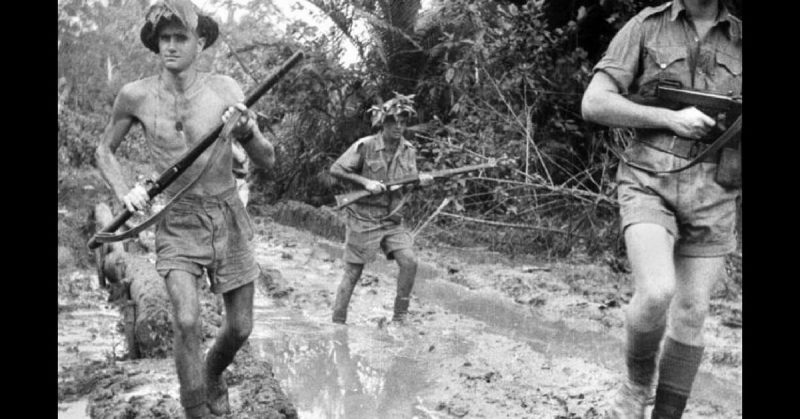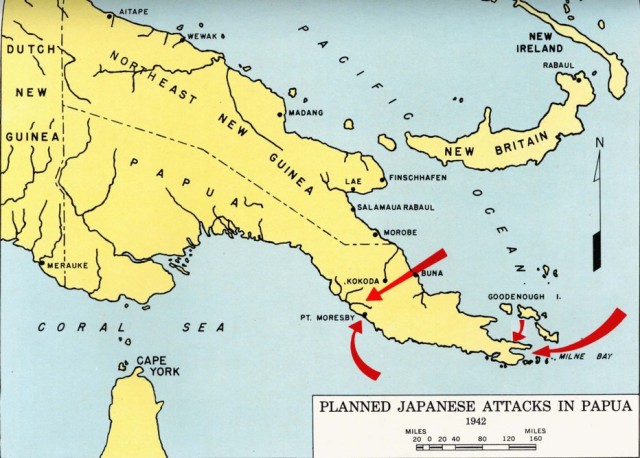Reprinted with permission from Australian Bunker and Military Museum
Milne Bay is located on the south-eastern tip of Papua. Before World War II, most of the area’s inhabitants were local Papuans, the only Europeans being a few missionaries and plantation managers. The area came to the attention of senior Allied officers in May 1942, when General Douglas MacArthur decided that an airbase should be established so that aircraft could patrol over the eastern seaward approaches to Port Moresby and raid Rabaul.
Development of the first airstrips at Milne Bay began in July 1942. Australian infantry and American engineers were sent to begin clearing land for the airstrips and the base that would support them. Over the following weeks, more ships arrived, bringing more men, supplies, and equipment for base development, and by the end of August nearly 9000 Allied personnel, mostly Australian, were based at Milne Bay.
The environment at Milne Bay was unpleasant and depressing. It rained every day during the construction period, and the few roads became impassable to vehicles. Living in rain-soaked tents on muddy ground, the men felt that ‘even Hell would be preferable,’ at least they would be dry. The area was also one of the worst places in the world for malaria, and many men became infected during the first weeks there, though it would take a couple of months before an epidemic broke out.
The Allies expected an attack. The inexperienced militia infantry brigade that had previously served only in Australia was now reinforced by a veteran Australian Imperial Force (AIF) brigade that had served in the Middle East. Unfortunately, their training in jungle warfare was hindered by the requirement to lend many men to the construction effort.
On 25 August, Kittyhawk fighters of 75 and 76 Squadrons RAAF, based at Milne Bay, attacked Japanese barges that had been intended for use in an attack on Milne Bay. In spite of the loss of these barges, on the next night, the Japanese landed a force of some 2000 marines at Milne Bay in an attempt to seize the airstrips and secure a base from which to provide naval and air support for the battle on the Kokoda Track. Believing that only a few infantry companies protected the area, the Japanese landed just before midnight on 26 August.
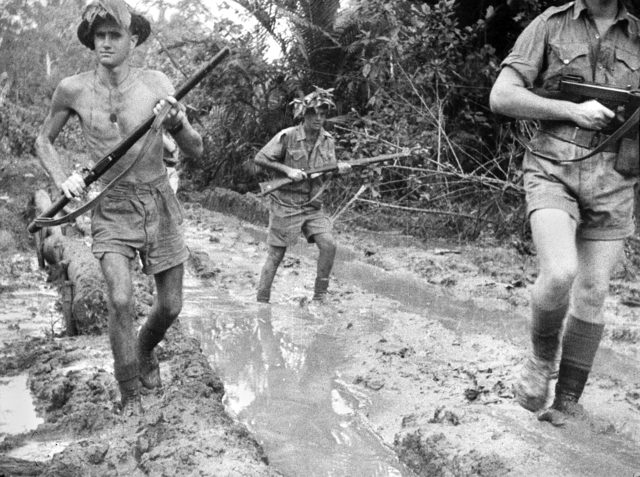
They landed east of the Allied airfields and had to advance 11 kilometers to capture them. The Japanese troops overwhelmed and pushed back the first Australian battalions encountered, the 61st and 2/10th Battalions, but began suffering heavy casualties when the Kittyhawk fighters of 75 and 76 Squadrons RAAF began bombing and strafing them. Nevertheless, they continued advancing for a few days and reached the edge of one of the airfields, No 3 Airstrip, where the attack was turned back by Australian and American troops who were dug in and armed with artillery, mortars and heavy machine-guns.
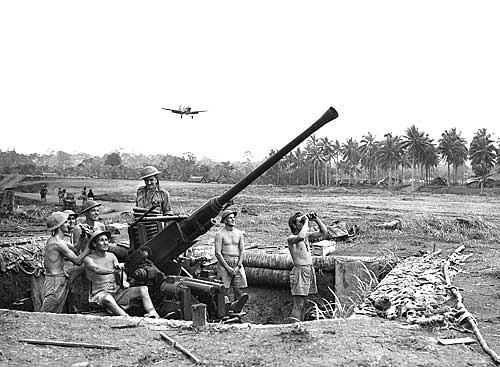
The Australians then counter-attacked, pushing the Japanese back towards their original landing area. Finally, 12 days after that landing, after bitter fighting along the coastline, the Japanese evacuated the survivors of the attack on the night of 6-7 September. The Australians had suffered 373 battle casualties, of whom 161 were dead or missing. Several captured men had been bayoneted. The Japanese death toll was at least 700.
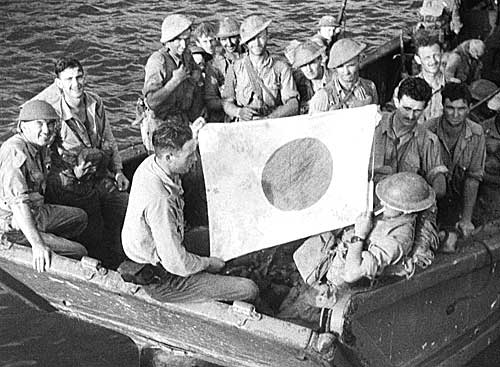
Although the battle was relatively minor in scale, it was a significant morale booster as the first real land defeat suffered by the Japanese. The Allied victory at Milne Bay showed that the Japanese soldier was not invincible.
After the battle, the Allies continued to develop the base at Milne Bay to support the counter-offensive along the northern coast of Papua and New Guinea.
The Australian Bunker & Military Museum is dedicated to All the Australian and Allied Servicemen who were not recognized for the part they played in defense of Australia. Seeing that underground installations were top secret, still to this day the Servicemen that are remaining feel that they cannot speak of one of the greatest feats undertaken on Australian soil.
